1. Self-Assessment
Mitch Clingo
Introduction
Assessment has been a core element of Career Development since the beginning of the 20th century. Career theory began early on with the belief that if you had an accurate understanding of an individual’s traits, the person could then be matched to their ideal profession. While we understand that career-pathing is more intricate than this matching process, a strong self-understanding still creates a solid foundation for vocational exploration, self-promotion, and informed career decision-making (Metz & Jones, 2013). Engaging with career assessments can help immensely in moving from a state of unawareness to opportunity.
This chapter explores the most common dimensions of self-awareness — personality, interests, and abilities — that have traditionally been measured through quantitative assessments (those that provide a categorical output). It will also look at modern qualitative assessments that seek to create self-awareness through a dialogue of self-reflection and meaning-making.
Learning Objectives
After carefully reading this chapter, completing the exercises within it, and answering the questions at the end,
you should be able to:
- Understand the strengths and limitations of self-assessments.
- Learn and understand the differences and dimensions of qualitative and quantitative assessments.
- Understand three dimensions of personal awareness — skills, values, and personality.
Quantitative Assessment Dimensions
Interests
The best known model of vocational interests is the hexagonal model proposed by John Holland (Holland, 1997). Holland defines six categories (or types) based on sets of interests. These are known as either Holland Codes or RIASEC types. In the model, as shown in Figure 1.1, interest types are organized onto the hexagram to imply stronger relations to closer types; i.e., Realistic is seated next to Investigative because a person who scores higher on the Realistic category is likely to score higher in Investigative as well.
Holland’s Hexagram
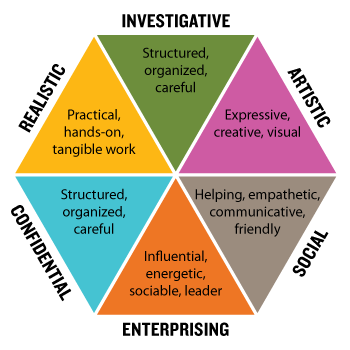
Holland (1997) believed workers would be happier in the environment they were most interested in. There are several self-assessments that can be accessed online that measure your interest in the six categories and provide your top three dominant types as a measure of occupational suitability. However, there are criticisms for using interests to steer career explorers to specific career areas (Spokane et al., 2002). Evidence does not support high job satisfaction simply based on interest alone. Furthermore, interest-based inventories do not account for the wide degree of “jobs” in any career area. For example, in the forestry industry, jobs range from Machine Operator to Project Manager. The responsibilities and skills required for those two roles are vastly different, even though they fall within the same career area of forestry. Interest inventories are a great place to start with career exploration. They can provide insight into available jobs or careers based on self-reported personal information. Once careers are identified, career explorers can delve further into their area of interest through reality-based investigation, such as job shadowing, volunteering, course work, etc. This information should be used in conjunction with other strategies to make realistic and informed career decisions.
Exercise 1.1 – RAISEC Assessment
Follow the link to the Holland Code (RIASEC) Test from the Open-Source Psychometrics Project and complete the assessment: (https://openpsychometrics.org/tests/RIASEC/).
After you complete the assessment, consider the following:
- Would your family and friends agree with your results?
- Were you surprised by any of the results?
- How have your interests guided your decision-making until now?
- Which suggestions from the assessment resonate with you most?
Personality
Personality is a staple of self-awareness. It is the individual set of behaviours, cognitions, and emotional patterns that arise from biological and environmental factors (Corr & Matthews, 2009). Understanding your own personality factors can be used in conjunction with other information to better understand strengths and weaknesses. This in turn allows for more appropriate and realistic occupation choices.
Currently, the most dominant paradigm of personality is the Five-Factor Model, as shown in Figure 1.2, also known as “the Big Five.” Each factor is a spectrum, with individuals able to score anywhere on the line. Each factor also has multiple sub-factors that make it up.
The 5 Factors of the model are:
- Openness to Experience
- Conscientiousness
- Extroversion
- Agreeableness
- Neuroticism
Each personality trait has its own meaning. Understanding these traits help provide insight into your own personality. A different way of looking at the big five can be that “Extraversion is sociability, agreeableness is kindness, openness is creativity and intrigue, conscientiousness is thoughtfulness, and neuroticism often involves sadness or emotional instability” (Cherry, 2022). An easy way to remember the big five is through the acronym OCEAN or CANOE. There has been many theories and attempts to figure out how many personality traits exist ranging from as little as 3 to 4,000 or more. With the big five, we are able to describe these broad traits in a building block style that creates our personality.
Five Factor Personality Model
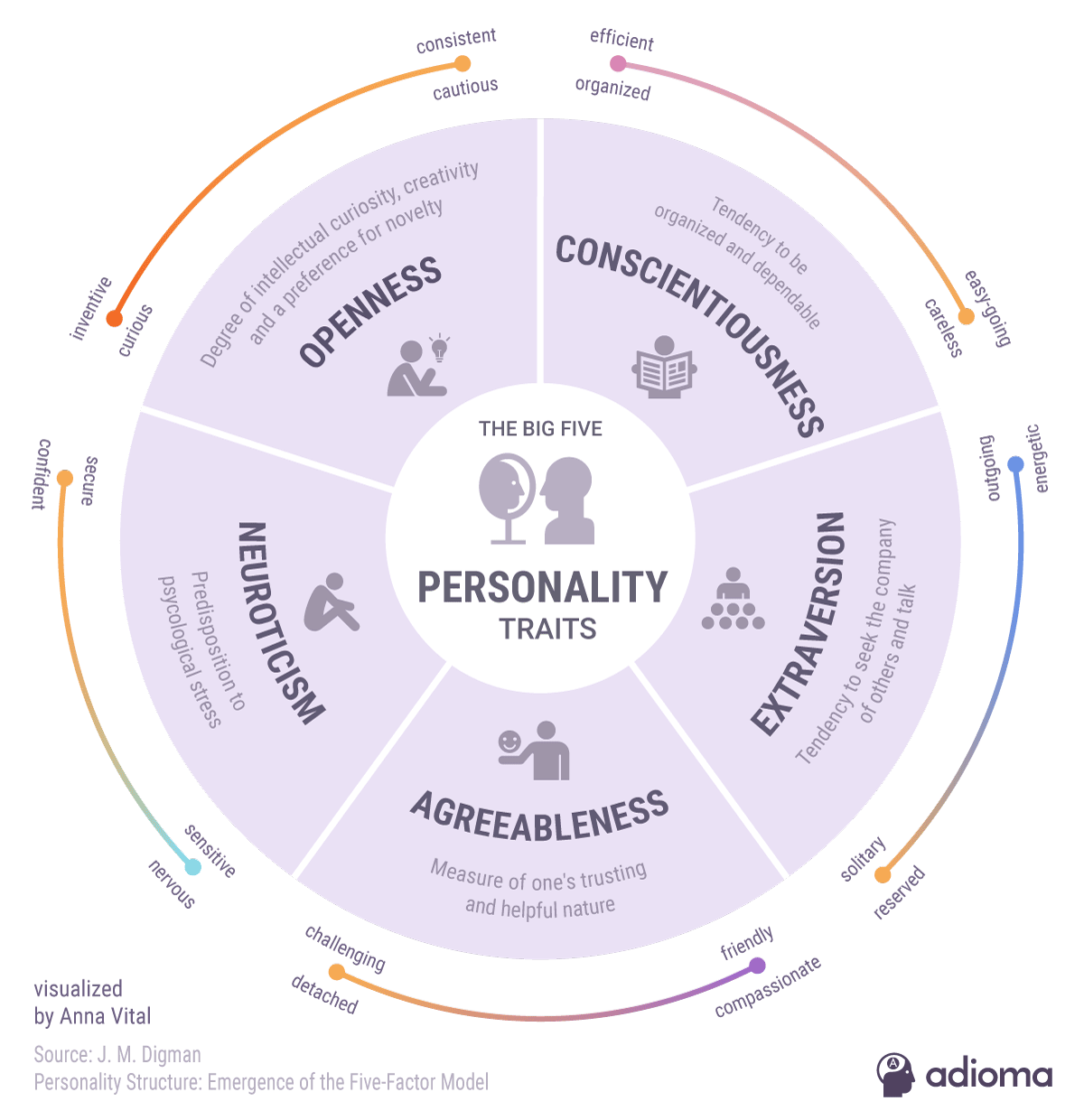
Personality has often been strongly considered in vocational choice, because it represents characteristics that are largely stable over time (Spokane, Luchetta, & Richwine, 2002). Therefore, many researchers believe a successful career decision can be made by matching personality with corresponding occupations. For example, an individual who scores high in Extroversion, characterized by sociability and talkativeness, is often suggested for entrepreneurial careers such as sales and marketing. However, research has struggled again to find clear correlations in this area (Guruge, 2018). It is difficult to find a consensus on what personality characteristics are most suited for a specific job. If a panel of experts were asked to determine the most valuable traits for a given occupation, different experts would suggest different traits. Using Extroversion again as an example, you could assume it would be a valuable trait for counsellors or case managers. However, you could make another argument that introverts, who have a strong ability to connect with others in one-to-one scenarios, would be a better fit for these positions. Most occupations are made up of individuals with a wide range of personalities. Personality assessments are well-suited to initiate the process of self-reflection. Being intentional about the skills you are developing, and reflecting upon your experience once you are done, leads to more effective career planning. See Figure 4.1 in Volunteering, which is based on Kolb’s Experiential Learning Cycle and Lewin’s Experiential Learning Model.
Exercise 1.2 – Big 5 Personality Assessment
Follow the link to the Big 5 Personality Test (https://www.truity.com/test/big-five-personality-test) on the Truity.com website, and complete the assessment:
After completing the assessment, consider the following:
- Would your family and friends agree with your results?
- Which result of the assessment do you most agree with?
- Which result of the assessment do you most disagree with?
- Which aspects of your personality do you feel impact your decision making?
- How has your personality guided your decision making until now?
Abilities
Skill and ability assessments have traditionally been used to determine the potential for specific types of work (Metz & Jones, 2013). In the 21st century, we emphasize choosing a career, rather than being matched to it. Hence, information from skills assessments is often most helpful when used in career exploration and planning.
Ability assessments evaluate strengths and weaknesses in relation to work. Once a career path has been chosen, this awareness is used to set goals for coursework and experiential opportunities to amend skill deficits or enhance strengths (Metz & Jones, 2013). Skills assessments can be further used to better articulate self-promotion and career pathing.
A major challenge current students face is the unprecedented level of change and uncertainty from labour market factors and the advancement of technology. This places a strong emphasis on soft skills and lifelong learning.
The Conference Board of Canada (2023) defines a baseline set of skills needed for career preparation. These are grouped into Fundamental Skills, Social and Emotional Skills, Personal Management Skills, and Teamwork Skills.
A final piece to consider is skill development throughout each stage of your career development. You should consider higher-tier skills the further you are in your education and work experience. Look to Bloom’s taxonomy (Figure 1.3) to understand how you can demonstrate the progress you’ve made on your skills. Find a way to make this better and more applicable.
Bloom’s Taxonomy
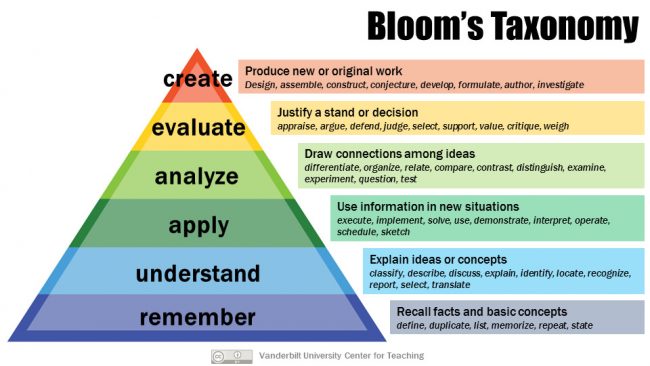
From the awareness gained from these initial quantitative assessments, qualitative assessments will help make sense of the data. These narrative and constructive tools will generate meaning-making from this information.
There are several additional assessment categories that can be explored to further foster self-awareness. These include values, workplace values, emotional intelligence, flexibility, adaptiveness, and so on.
Qualitative Assessments
“Abilities predict occupational performance and success; interests and values predict occupational satisfaction” (Metz & Jones, 2013, p. 471). Qualitative Assessments are then used to understand the larger picture. Information can be pulled together from various sources while working with other considerations to create a more complete picture. These assessments emphasize our individual experiences, which affect the choices we make. They are more informal, flexible, open-ended, and holistic than quantitative assessments. They recognize the importance of stories and the intangible aspects that lead to career adaptability and satisfaction. Qualitative assessments also do a better job of taking into account the challenges and barriers that traditional assessments overlook (McMahon, Watson & Lee, 2019).
“Qualitative career assessment stimulates storytelling, and in doing so, facilitates learning about oneself through self-reflection and enhanced self-awareness” (McMahon & Watson, 2019, para. 4). Collaboration and cooperation with a career practitioner is encouraged to facilitate reflection, debriefing, and meaning-making.
How Career Practitioners Help Make Sense
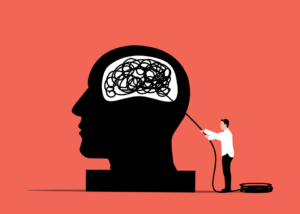
Examples of qualitative assessments include My System of Career Influences (McMahon, Patton & Watson, 2017; McMahon, Watson, & Patton, 2013), which guides users through a structured process in a booklet format, and the Motivated Skills Card Sort (Knowdell, 2005), which provides a set of step-by-step instructions for users.
Discussion
Interestingly, while it is important to consider these factors when choosing a career, these factors are not set in stone. Research has shown that personality traits and RAISEC interests are impacted by the careers we choose. That is to say, regardless of what you choose, your personality and interests will moderately change to match your chosen field (Wille & De Fruyt, 2013).
A strong sense of self-awareness is the first step in making informed career decisions. Once you feel you have a strong sense of yourself, your next step is to expand external awareness. That is to say, learn more about what careers are out there and how viable they may be. The next chapter on Labour Market Information will explore these concepts. In the Career Planning and Goal Setting chapter, you’ll read how an awareness of self and available career options can be integrated to make career decisions.
Career Diamond
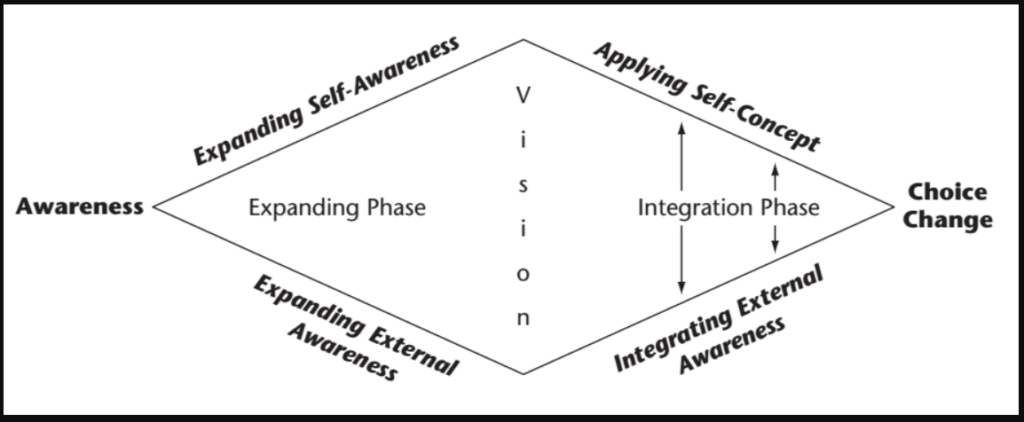
Long Descriptions
Figure 1.1 Holland’s Hexagram Long Description
Psychologist Holland divided personality types into a 6-factor typology. With a few keywords for each, they are:
- Investigative: structured, organized, and careful
- Artistic: expressive, creative and visual
- Social: helping, empathetic, communicative and friendly
- Enterprising: influential, energetic, sociable, and leader
- Confidential: structured, organized and careful
- Realistic: practical, hands-on, and tangible work
Image from Linda Turner, Parental Alienation (2018 [blog]. Used with permission.
Figure 1.2 Big Five Personality Traits Long Description
J. M. Digman’s Personality Structure: Emergence of the Five-Factor model is described as follows:
- Conscientiousness: A tendency to be organized and dependable; ranging from efficient and organized to easy-going and careless
- Extraversion: A tendency to seek the company of others and talk; ranging from solitary and reserved to outgoing and energetic
- Agreeableness: A measure of one’s trusting and helpful nature; ranging from challenging and detached to friendly and compassionate
- Neuroticism: Predisposition to psychological stress; ranging from secure and confident to sensitive and nervous
- Openness: Degree of intellectual curiosity, creativity and a preference for novelty; ranging from inventive and curious to consistent and cautious
Image from Visualized on Adioma by Anna Vital [original source J. M. Digman]. Used with permission
Figure 1.3 Bloom’s Taxonomy Long Description
Bloom’s taxonomy framework appears as a triangle representing the variety of cognitive learning levels. There are six major categories, and each contains subcategories, lying along a continuum from simple (largest bottom “slice” of triangle) to complex (smallest apex portion of triangle) and concrete (largest) to abstract (smallest apex of triangle).
The six categories and their subcategories of learning activities, from largest (simple) to smallest (complex), are:
- Remember: recall facts and basic concepts – define, duplicate, list, memorize, repeat and state
- Understand: Explain ideas or concepts – classify, describe, discuss, explain, identify, locate, recognize, report, select, and translate
- Apply: Use information in new situations – execute, implement, solve, use, demonstrate, interpret, operate, schedule, sketch
- Analyse: Draw connections among ideas – differentiate, organize, relate, compare, contrast, distinguish, examine, experiment, question, test
- Evaluate: Justify a stand or decision – appraise, argue, defend, judge, select, support, value, critique, and weigh
- Create: Produce new or original work – Design, assemble, construct, conjecture, develop, formulate, author, investigate
Image from Vanderbilt University, Center for Learning, via Wikimedia Commons, CC BY-SA 4.0
Figure 1.5 Career Diamond Long Description
This framework illustrates that a person begins their career confused and unaware about who they are, the job market, or both. The process of career counseling helps them expand their knowledge and then find some resolution about both to make a career choice or change.
The person begins when they are aware they need to explore careers and make a choice in the world of work. The top of the diamond represents the person’s self-awareness; it expands and then narrows down to an eventual choice or change. The bottom of the diamond is the person’s awareness of the world of work, which expands and then narrows to a choice.
On one side of the diamond is the Exploring Phase, where a person explores their own internal self-concept and expands their external awareness of the work world. The other side is the Integration Phase, when the person applies their self-concept and integrates it with their new knowledge (external awareness) of the work world.
Image and description adapted from Matthew Guruge, Awato. Used with permission.
References
Cherry, K. (2022, October 19). What are the big 5 personality traits? Verywell Mind. https://www.verywellmind.com/the-big-five-personality-dimensions-2795422
Corr, P. J., & Matthews, G. (Eds.). (2009). The Cambridge handbook of personality psychology (pp. 748–763). Cambridge University Press.
Digman, J. M. (1990). Personality structure: Emergence of the five-factor model. Annual Review of Psychology, 41, 417–440. https://doi.org/10.1146/annurev.ps.41.020190.002221
Guruge, M. (2018, February 1). Career diamond [digital image]. In A Career counselor’s guide to career assessment. Awato.co. https://awato.co/career-assessment-guide/ (Originally created in Career Counseling and Development in a Global Economy by Andersen and Vandehey, 2006, p. 43.)
Holland, J. L. (1997). Making vocational choices: A theory of vocational personalities and work environments. Psychological Assessment Resources.
Knowdell, R. (2005). Motivated skills: Card sort card deck. Career Research & Testing, Inc.
McMahon, M., Patton, W., & Watson, M. (2017). From the systems theory framework to my system of career influences: Integrating theory and practice with a black South African male. In L. A. Busacca & M. C. Rehfuss (Eds.), Postmodern career counseling: A handbook of culture, context, and cases (pp. 285–298). American Counseling Association.
McMahon, M., Patton, W., & Watson, M. (2017a). My System of Career Influences (2nd ed.). Australian Academic Press.
McMahon, M., Patton, W., & Watson, M. (2017b). My System of Career Influences (MSCI) Facilitators’ Guide (2nd ed.). Australian Academic Press.
McMahon, M., & Watson, M. (2019, June 5). Challenges and opportunities in qualitative career assessment. CERIC. https://ceric.ca/2019/06/challenges-and-opportunities-in-qualitative-career-assessment/
McMahon, M., Watson, M., & Lee, M. C. Y. (2019). Qualitative career assessment: A review and reconsideration. Journal of Vocational Behavior, 110(Part B), 420–432. https://doi.org/10.1016/j.jvb.2018.03.009
McMahon, M., Watson, M., & Patton, W. (2013) My system of career influences MSCI (Adult): A qualitative career assessment reflection process: facilitator’s guide. Australian Academic Press.
Metz, A. J., & Jones, J. E. (2013). Ability and aptitude assessment in career counseling. In Brown, S. & Bob Lent (Eds.), Career development and counseling: Putting theory and research to work, (2nd ed., pp. 449–476). John Wiley & Sons.
Spokane, A. R., Luchetta, E. J., & Richwine, M. H. (2002). Holland’s theory of personalities in work environments [PDF]. Career choice and development, 4 (2002), 373–426. https://www.researchgate.net/profile/Arnold_Spokane/publication/265667871_9_Holland%27s_Theory_of_Personalities_in_Work_Environments/links/551038de0cf2ba84483d2c77.pdf
The Conference Board of Canada. (2023, January 25). Finding your employability skills. The Conference Board of Canada. https://www.conferenceboard.ca/future-skills-centre/tools/finding-your-employability-skills/
Wille, B., De Fruyt, F. (2014, March). Vocations as a source of identity: Reciprocal relations between Big Five personality traits and RIASEC characteristics over 15 years. Journal of Applied Psychology, Vol 99(2), 262–281. https://psycnet.apa.org/buy/2013-38691-001
Media Attributions
- Figure 1.1 Holland’s Hexagram by Linda Turner, via Parental Alienation. Used with permission.
- Figure 1.2 Five Factor Personality Model visualized on Adioma by Anna Vital, inspired by J. M. Digman Used with permission.
- Figure 1.3 Blooms-Taxonomy-650×366 by Vanderbilt University, Center for Learning, via Wikimedia Commons, CC BY-SA 4.0
- Figure 1.4 Mental Therapy Counseling People Loneliness by mohamed_hassan on Pixabay.
- Figure 1.5 Career Diamond, by Matthew Guruge, via Awato. Used with permission.

